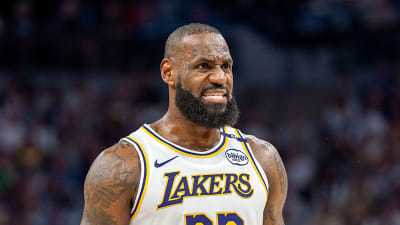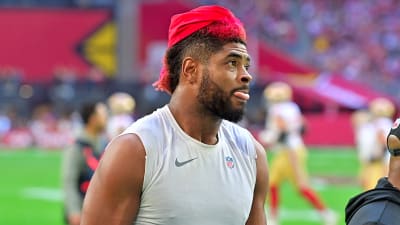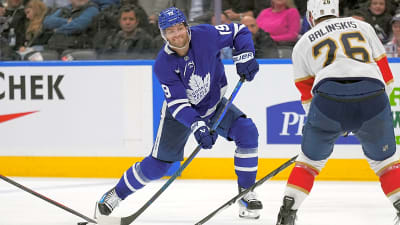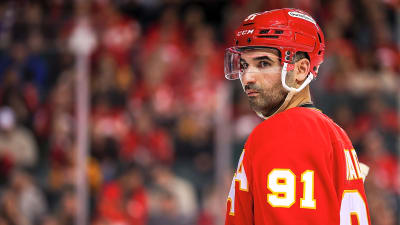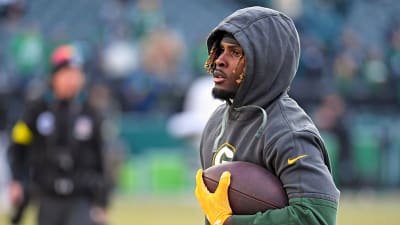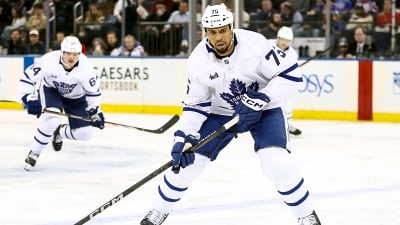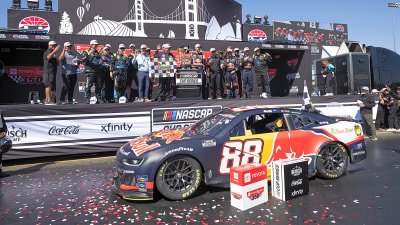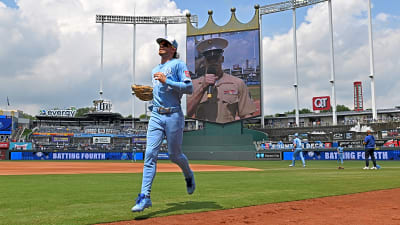
Though the NBA Draft combine receives most of the spotlight, the G League Elite Camp marks an important part of the draft process. The list of participating prospects is weaker than most years, but some prospects will still rise above the rest. Let’s discuss five G League Elite Camp players with potential to break out and boost their stock for the 2025 NBA Draft
Kobe Johnson, Wing, UCLA
Johnson was the lone prospect in my current top 60 to miss out on the NBA combine and start at the G League Elite Camp. His final season at UCLA didn’t build off of his previous successful seasons at USC, especially on offense. Johnson saw slight decreases in usage, efficiency and 3-point shooting moving to UCLA.
Still, Johnson will be attractive to NBA teams seeking wing bodies given the scarcity of that archetype in this draft. Johnson is an excellent defensive player, capable of blowing up plays with length and timing off the ball. At 6’6 with a long wingspan, Johnson has the mobility and size to guard multiple positions.
He’ll need to find consistency with his jumper to stick in the NBA, as his 3-point efficiency fluctuated significantly by the season. If that does happen, though, Johnson’s high feel, connective playmaking skills separate him from many second-round wing prospects. Teams with confidence in their ability to develop outside shooting should value Johnson as a second-round pick.
Caleb Grill, Guard, Missouri
Few players in college basketball shot the basketball like Grill for the Missouri Tigers. The 6’3 guard drilled 39.6% of an enormous 14.8 3-point attempts per 100 possessions, taking and making heavily contested shots from beyond NBA range. He’s a dynamic shooter off movement, forcing defenses to pay heavy attention to Grill off the ball.
Elite, guard-sized shooters aren’t tough for NBA teams to find, but Grill separates himself with excellent off-ball moving and defensive chops. His vertical explosiveness helps Grill finish above the rim on cuts and closeout attacks. Grill marries that athleticism and strong positioning to thrive as a low-man on defense, managing an excellent 3.7% steal rate last season.
Grill’s age — he’ll turn 25 before his rookie season — and late college breakout will scare some teams away. Based on his final Missouri season, he flashed enough outside of his sizzling outside shooting to intrigue teams in his potential to help an NBA rotation.
Amari Williams, Big, Kentucky
Amari Williams’s physical tools immediately catch attention; he likely stands a bit shorter than his listed seven feet, but an enormous wingspan and standing reach help compensate for that. He’s not an overwhelmingly twitchy athlete, but Williams’s tools and light feet let him guard the perimeter and rotate down to block shots.
Beyond his physical tools, Williams’s skill with the ball fuels much of his prospect intrigue. Williams functioned as a playmaking hub for Kentucky, entrusted with plenty of ball-handling responsibility. We’ll see how Williams functions on offense outside of Mark Pope’s excellent scheme during the G League Elite Camp scrimmages.
Williams isn’t without notable faults as a prospect. He’s an older, non-shooting big without standout athletic tools. He will attract teams who rely on big men to initiate offense and make plays. A strong combine performance could see a team investing in Williams’s unique physical profile and ball skills.
Nate Bittle, Center, Oregon
Bittle has developed into one of the better centers in the country over the last few seasons. He expanded his shooting range last season at Oregon, making 34% of over 100 catch-and-shoot triples and thriving as an intermediate scorer. Outside shooting will help any seven-footer attact NBA eyes and Bittle is no different.
Despite an increase in usage and offensive responsibility, Bittle increased his efficiency and assist-to-turnover ratio from a season ago. Bittle blocked tons of shots and lowered his foul rate as well, marking significant all-around improvement for the Oregonian big man.
Critically, Bittle started all 35 of Oregon’s games this season, remaining healthy after losing plenty of time to injuries throughout his college career. Bittle’s medical information will help NBA teams feel confident in his projection. He’s big and skilled enough to dominate a combine scrimmage setting, which could see him rising up boards and lead him to forgo the rest of his college eligibility.
Dylan Cardwell, Center, Auburn
Cardwell profiles like the shot blocking, rim-running rotation big men the NBA has featured for years. He’s an explosive, twitchy athlete, sporting an 8.8% block rate and finishing 76.6% of his shots at the hoop throughout his Auburn career. Teams with high-volume lob passers can extract some value from Cardwell on offense.
Most of Cardwell’s value will come on the defensive end, though. He’s more than a traditionally limited paint protector, as Cardwell possesses the movement skills to guard the perimeter and switch in space. Teams could weaponize Cardwell as a versatile defensive chess piece who could theoretically fill a number of different defensive roles.
Scrimmage settings can deflate the value of athletic finishing bigs due to their dependence on great guard play. If Cardwell can dominate on defense and overwhelm opponents with his motor and explosiveness on offense, he could boost his stock to true second-round conversations.
More must-reads:
- Clippers, Suns accomplish offseason goals with Bradley Beal buyout, signing
- LeBron James' agent warns NBA media about his retirement
- The 'Most points in a game by NBA team in 2024-25' quiz
Breaking News
Trending News
Customize Your Newsletter
 +
+
Get the latest news and rumors, customized to your favorite sports and teams. Emailed daily. Always free!
